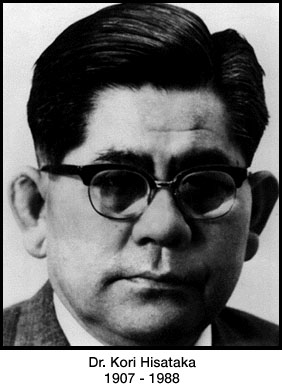
|
GENBUKAN KARATEDO |

|

|
GENBUKAN KARATEDO |

|



Shorinjiryu Kenkokan Karatedowas founded by Masayoshi Kori Hisataka (Seiki Kudaka in the Okinawan Dialect). Kori Hisataka was born in Shuri, Okinawa in 1907. He was born of lesser nobility and his family was awarded an island off Okinawa, Kudaka Island. He began training in the martial arts as a child under Ankoh Asato, in addition to receiving training in his family's own style of martial arts. When his father died, he was taught kobudo by Sanda Kanagusuku (Kanegusuku Ufuchiku in the Okinawan dialect), a retired police comissioner. His main instructor was the Okinawan Karate Master, Chotoku Kyan. In 1929, he and Master Kyan and Master Ryosei Kuwae toured Taiwan, demonstrating and competing in challenge matches, where according to legend they never lost a match. * NOTE Supposedly it was after Master Kyan's experiences in Taiwan that Master Kyan developed the kata Ananku). He travelled to mainland China where he mastered Shorinjiryu Kempo and delved into Pa Kua Chuan . During the 1930's, he traveled throughout Thailand, Korea, Burma, Afghanistan, Russia, and Mongolia. When he returned to Japan he entered the military. While in the armed forces, he trained extensively and demonstrated his skills of Karatedo at various tournaments and exhibitions. During World War II, while stationed in China he had an opportunity to study Shorinji Kempo and Hakkyoku Kempo. Also while he was in Manchuria he had the opportunity to practice judo with Minoru Mochizuki, (tutored by Jigoro Kano, the founder of Judo, and uchi-deschi of Morihei Ueshiba), founder of present-day international organization, Yoseikan Budo. Sensei Mochizuki adopted the main kata of Seiki Kudaka's style and incorporated it into the Yoseikan curriculum as a drill to train atemi. In addition to training in Karatedo, Shinan Hisataka was also adept at Judo (studied under Master Sampo Toku at the Kodokan), Sumo and Kendo. After World War II, Shinan Hisataka settled in Tokyo, Japan in 1945, established his dojo and founded his style, Shorinjiryu Kenkokan Karatedo. He developed his unique style of martial art as a result of his experience and theories regarding the optimal method of practicing Karatedo. His style is a synthesis of Okinawan Karate with features of Shaolin Kung Fu, Judo, and Kobudo. As a result of the knowledge which he gained through years of practice and practical application, Shinan Hisataka realized that individualism must be acknowledged in the dojo. Also stress was placed upon the full follow through of techniques, thereby creating greater torque. The use of the heel and the tate ken or vertical fist for added strength, safety, and natural movement was instituted - the vertical fist first being was used in China, and then, in Tomari, Okinawa. Yakusoku kumite or prearranged fighting forms, proved an effective training tool allowing for delivery of techniques, evasive moves and body control while maintaining safety. He insisted upon the use of bogu or armour. The use of protective equipment proved to be an excellent method of preventing injury while allowing for full contact. Most schools dropped such equipment during World War II, as the costs were extremely prohibitive. Yet, Shinan Kori Hisataka insisted upon this effective training tool when he introduced his new system in 1946. The anzen bogu or SUPERSAFE protective armour is used today by all Shorinjiryu style schools. In 1964, at the New York World's Fair held in Flushing Meadow Park, New York, U.S.A., Shorinjiryu Kenkokan Karatedo was selected by the Japanese Government as the Martial Arts style to be introduced to the United States for the first time on a world stage. In 1967, at the world Expo'67 in Montreal, Quebec, Canada, Shorinjiryu Kenkokan Karatedo was again selected by the Japanese Government, for the Martial Arts demonstrations. Shortly after these events, many of the Japanese Shorinjiryu Kenkokan Karatedo instructors opened schools on the east coast of the U.S.A. and in Canada. Among these Japanese instructors was Shihan Shigeru Ishino. |
